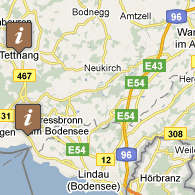Growth Opportunity: Localize Your B2B Site for Spanish-Speaking Business Owners

Hispanic-owned businesses in the United States are on the rise, and in a major way.
They grew over 45 percent-from 2.3 million to 3.3 million firms-in just five years. In contrast, the total number of all U.S. firms increased a meager 2.0 percent during the same period.
Many Hispanic business owners speak Spanish with their colleagues, employees and customers. Despite this, websites targeting this B2B audience aren't often localized into Spanish.
B2B companies that fail to serve Hispanic customers with translated websites are missing a big opportunity to increase their appeal, expand their reach and stand out from competitors.
Unique requirements
Like other business owners today, Hispanics turn to online content to research, evaluate and compare products and services. But Hispanics' requirements are not necessarily fulfilled by English-only websites-especially if English isn't their preferred language.
The Spanish language is important to these entrepreneurs. Many Hispanic business owners strive to maintain fluency in Spanish to preserve their cultural heritage within America's famed "melting pot."
Another reason is changing behavior among B2B buyers overall. The demarcation between B2B and B2C is blurring as more business people emulate consumers by using the Internet to conduct research, and by making purchases on digital platforms.
For one thing, online research is faster and cheaper than meeting with salespeople or reading through piles of printed literature. For another, business decision makers are getting younger-and younger people are more tech savvy.
With the growth of online B2B activity, together with the surge in Hispanic business, it's more important than ever to serve Spanish-speaking buyers in Spanish. Organizations that offer localized versions of their flagship websites often see these benefits:
- Compete more effectively: They can set themselves apart by being among the few to engage with Spanish speakers in their preferred language.
- Reduce costs: Pay-per-click rates and keyword bids are less expensive in the Spanish-language B2B marketplace because there's less competition.
- Save money on paid ads: The costs of online advertising and sponsored content are lower in this emerging market.
Website Localization Tips
Using the coded structure and content of a corporate English-language website to create a Spanish version is a powerful strategy for serving Hispanic business owners. It helps businesses quickly capitalize on the strong growth of this market sector.
While website localization may seem daunting, B2B companies can save time, effort and money by following these suggestions:
- Translate content, preserve site functionality: Separating translatable English-language content from website code allows an organization to retain the functionality and user experience of its flagship site, while delivering localized information.
- Use technology: Advanced website localization solutions can automatically identify content for translation, both initially and on an ongoing basis. Such technology minimizes manual processes and streamlines workflows to relieve existing staff of extra work and avoid the need to hire new workers.
- Optimize searches: Translating SEO-rich elements such as keywords, metadata and "hreflang" tags optimizes content for Spanish-language web searches.
- Repurpose translations: To save time and avoid duplication, companies should consider solutions that provide access to a database of translated web content for reuse in social media, print collateral and other channels.
Connect with the Hispanic Market
The double-digit growth of Spanish-speaking businesses across the United States offers B2B marketers huge potential-if they can present their products and services in Spanish. Hispanic business owners and decision makers are looking for companies that demonstrate an understanding of their needs, and a desire for their business by literally speaking their language.
One of the most important success factors for engaging these businesspeople is providing a satisfying online experience. Solutions that offer advanced translation technologies are key to delivering a high-quality localized website quickly and easily.
About the Author: Craig Witt, Executive Vice President: Global Sales, Marketing and Go-To-Market at MotionPoint











